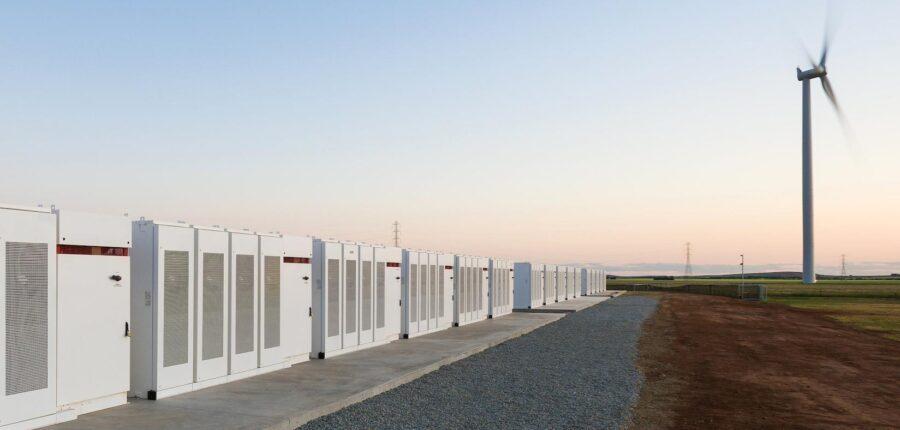Discussions about electricity markets can be so blurry.
And perhaps a bit intimidating.
About ten years ago, I represented a very small Midwestern city in an arbitration proceeding against a large utility. As I prepared with the lawyers for our hearing, we decided our strategy would be the following:
I would explain to the three arbiters how an RTO performs economic dispatch to determine the locational marginal price. I would not be able to use a single acronym in my explanation. No laptop. No PowerPoint slides.
Just me and a blank chalkboard.
RTO markets were still relatively new, and the combined age of the arbiters exceeded two hundred years.
I practiced my presentation with family, friends, and coworkers.
Anybody who would listen and stay awake.
Though I completed my mission and the municipality won the case, I was shocked at how difficult it was to explain the core principle of organized wholesale markets.
Why is it so tough to explain something so simple in theory?
A decade later, I believe that many market participants still struggle to explain these concepts to regulators and to the general public, especially when markets experience high system stress and shortages of operating reserves.
Scarcity pricing is triggered by the absence of operating reserves or the implementation of emergency procedures by the market operator.
If we wish to achieve a national energy portfolio dominated by intermittent renewable resources, we must do a better job calculating scarcity pricing in our energy markets. And we need a less convoluted process devoid of ambiguous settlement charges after the fact.
We need to implement the Economic Operating Reserve Demand Curve (ORDC).
Why the Struggle to Explain?
I believe we grapple with explaining energy pricing clearly because we largely abandon the concept of a free market during periods of system stress.
Why? Because we don’t like the answer about seven percent of the time when scarcity pricing should be triggered.
Market regulators simply do not like to see high prices.
The current methodology to price energy during scarcity events mutes the true value of the next incremental megawatt to serve load. Or, in these instances, keep the lights on.
“During stressful events, market operators sometimes take many non-market measures to avoid running out of operating reserves. These subjective actions, often outside the normal merit of economic dispatch, introduce a level of ambiguity as to when scarcity pricing is triggered.“
Finally, due to the current methodology to average the five-minute locational marginal pricing, we (again) dilute the price signals to the market during scarcity events.
Price suppression is “an illness in need of a cure” if we want to accelerate the integration of substantial intermittent renewable energy in a low-cost and reliable manner.
The Stigma of High Prices
Price spikes are mistakenly perceived as a failure of the organized market. Further, these rare events garner headlines that shock utilities and the general public and often lead to emotional, reactionary steps by regulators, all in the name of “protecting the consumer.”
While the instantaneous price spike may eventually land itself in a market monitor’s report as an interesting footnote, did it truly adversely impact the public from a broader viewpoint?
Rather than key in on the seven percent of the time where scarcity prices existed, we need also to consider the other ninety-three percent of the time when the market did not experience a shortage of operating reserves.
In other words, we should focus on the total energy cost paid by the consumer for the year if we wish to grade the total risk to the consumer, not just the seven percent of the time where scarcity pricing is triggered.
Like many things in today’s world, we often focus on the tail events of a probability distribution curve and decide these events represent part of the 95th percentile, where things work as planned.
Recency bias and confirmation bias are two common cognitive biases that, unfortunately, impact market regulators and designers during periods of high system stress.
We have seen recent examples whereby some RTO markets set records for the $ cost per MWH yet recorded annual wholesale prices lower than the previous year.
Occasional ballistic real-time prices are not synonymous with a higher annual average locational margin price (LMP). Learn more about How LMP Markets Work in this blog post.
The Big Apple Traffic Congestion Fee
A traffic congestion fee will go into effect in New York City by 2021 that will charge vehicles traveling into or within a predetermined area in the Manhattan central business district. The purpose of the plan is to reduce road congestion, shorten commutes, reduce air pollution, and raise funds for long-term mass transit upgrades.
The only way to effectively incent productive behavior is to charge:
- $8 for cars and commercial vehicles
- $21 for trucks
Are wholesale markets so different?
Scarcity pricing would:
A) Reduce costly congestion on the grid;
B) Reduce air pollution with higher penetration of solar/renewables, and;
C) Send a transparent, proper price signal for future investments.
In a world soon to be dominated by wind, solar & storage, we need to find a way to adequately price flexible, fast-responding resources in the most transparent and easy-to-understand manner possible.
Price Suppression
“Price suppression” is one of the more sensitive topics in energy markets today. Some renewable advocates view the term as a criticism toward the zero marginal cost characteristic of solar and wind generation. And a few may even equate it with a defense argument for thermal generation to explain why the market economics now fail them.
However, price suppression means something quite different.
RTO system operators sometimes need to commit higher-priced generation to handle sudden, unexpected operational challenges such as:
- Unplanned transmission outages;
- Unplanned generation outages or,
- Maintaining adequate voltage due to sudden drops in wind and/or solar generation.
Market operators sometimes need to utilize operating reserves to get through these short-lived crises to maintain system reliability. And, they may plow through those reserves resulting in a need to call on higher-priced generation to regain the proper reserve capacity.
Rather than incorporating these costs into LMPs, these additional costs wind up buried in a lengthy settlement statement. An RTO will assign these costs to a market participant based either on (a) load ratio or (b) deviation from day-ahead (DA) schedules.
By applying these settlement charges after the fact, the true cost to serve load is opaque.
So, while a lower LMP may provide better optics around a market monitor annual report and keep unsuspecting regulators at bay, one thing will always remain true…
At the end of the day, the load will pay.
Why Price Suppression Hurts
High-frequency data, digitalization, and distributed energy resources (DERs) are innovative, powerful new tools that stand ready to assist organized markets in handling sudden, unexpected events when operators struggle to match supply and demand. So too, do demand response (DR) and battery energy storage systems (BESS). But, all of these need to have an accompanying, accurate, and transparent price to meaningfully participate in markets.
Price suppression sends the wrong investment signal to flexible, fast-ramping resources. Artificially lower prices do not provide incentives to resource owners to be available during shortage conditions.
Price suppression plays a large factor in the “missing money problem.”
Finally, price suppression prevents one other important resource from participating…
The speculator.
A healthy market entering a mature stage generally sees a narrowing of the spread between day-ahead prices and the real-time market.
By their very nature of “buying low and selling high,” speculators play an important role in providing liquidity and ultimately collapsing spreads. They often live in the virtual trading market to take advantage of the delta between DA and RT prices.
While often misunderstood and even maligned, speculators have a long history of entering markets during periods of high volatility and moving elsewhere after spreads collapse
The collapse of the DA/RT delta results in lower overall costs to the load.
How Would Scarcity Pricing Be Applied?
In an RTO/ISO market, resources are scheduled and dispatched to meet forecasted load demand plus a margin of operating reserves.
When the market does not have adequate capacity available to meet both energy and reserve requirements, the reserves are deployed to meet demand and keep the lights on. The net effect of this action leaves the market short of reserves.
In such an event, the price of operating reserves should reflect the value of the system of restoring marginal reserve capacity. In his April 2018 article on shortage pricing in competitive electricity markets, Robert Sinclair (VP, Potomac Economics) suggested the market can reflect this value using an Operating Reserve Demand Curve (ORDC) that sets prices for reserve products based on the marginal reliability value of reserves at each level of shortage, expressed as:
VOLL*p(s) = Marginal Value of Reserve Capacity
- VOLL = Value of Lost Load
- P(s) = Probability of losing load at a reserve shortage of (s) MW
Let’s touch on the Value of Lost Load (VOLL) for a moment, which can also be a sensitive topic that often brings an emotional response versus a data-driven answer.
VOLL is the estimated amount that customers receiving electricity – with firm contracts – would be willing to pay to avoid a disruption in their electricity service.
Let’s face it, blackouts involve far-reaching consequences for an entire socioeconomic system. As difficult as the topic may be, you should have a good idea of how much you’d be willing to pay to keep the lights on in different areas of your system, notwithstanding the strong distaste for failing to reliably serve a single customer.
Figure 1: MISO Operating Reserve Demand Curve

Widely considered the “Godfather of RTO Markets,” Dr. William Hogan also advocated for “Electricity Scarcity Pricing Through Operating Reserves” in April 2013.
Further, reserve shortages should also be reflected in energy prices because reserves are being deployed to serve energy during this scarcity event.
The graph in Figure 1 denotes ninety-three percent of the time, whereby scarcity pricing would be relatively benign to the consumer.
If we adopted the Economic ORDC IMM Model, we would see the true incremental price of energy to serve load and, perhaps, end the never-ending debate regarding capacity market design (since we would discover a large amount of “the missing money”).
Figure 2: Peak Demand Hours Per Year, By Season, 1998-2018
(Southeast Compared to Duke Energy Carolinas)

Florida – Summer of 1998
I began my career in the energy markets in 1998 as a power trader with Florida Power Corporation in St. Petersburgh.
The 1998 Florida summer was not only a scorcher, but a high-pressure system decided to settle over the state…
…for pretty much the entire summer.
No afternoon rain showers to bank on to curtail record daily load demands.
All in all, a perfect time to lose nearly fifty percent of your generation, which we unfortunately experienced.
During a few extreme events, our team met to determine the Value of Lost Load as day ahead prices around the country soared into the thousands of dollars for a few weeks.
Though our methodology was not as scientific as it would be today, I do recall that we decided we would pay as much as $10,000 per MWh if necessary.
In their research published in Frontiers (in Energy Research), Thomas Schröder & Wilhelm Kuckshinrichs stated that:
“VOLL could help to ensure an optimum distribution to end users of the remaining electricity in the case of a power outage, as far as this is possible with the technical options available. Further developing the VOLL approach as an economic index would, thus, effectively complement other technical indices.“
Conclusion
Public policy goals throughout the United States clearly state the desire to continue to integrate a substantial amount of additional clean energy in order to accomplish extremely ambitious carbon reduction goals by 2050.
Just take a look at the expected solar growth in the United States for the next three years:
Figure 3: Solar Development by ISO

Figure 3 graphically depicts the clear reason why we need to implement rationale scarcity pricing ASAP, as intermittent solar power is about to achieve a significant percentage of our national portfolio in the next three years.
Large-scale renewable penetration poses unique operational and reliability challenges to our market operators, and fast response and flexible resources will be needed.
Wholesale markets need to reprice the value of operating reserves and implement scarcity pricing to send the proper incentive signal to available resources.
Controversial and complicated capacity markets are really nothing more than a substitute for scarcity pricing. And while it is understandable that regulators wish to shield the consumer from exposure to high prices, the current solution does not really do so in the end.
The load always pays.
As the percentage of renewable energy increases in the overall national portfolio, we continue to learn more about how the markets need to operate. Properly pricing energy and operating reserves will send the right signals to resources that provide the much-needed flexibility and fast ramping response. Focusing on solving this problem will be easier than trying to fix broken capacity markets.
The short-run solution will also provide the long-run solution.
Sources
It’s Time to Refine How We Talk About Wholesale Markets:
Robbie Orvis & Mike O’Boyle
The Bigger Picture| FERC Requires Greater Transparency Regarding RTO/ISO Uplift.
Glenn S. Benson
What is Shortage Pricing & Why is it Essential in Competitive Electricity Markets.
Robert Sinclair
Electricity Scarcity Pricing Through Operating Reserves
William Hogan
Seasonal Electric Demand in the Southeastern United States/Southern Alliance Clean Energy.
John Wilson & Maggie Shober
Value of Lost Load: An Efficient Economic Indicator for Power Supply Security? A Literature Review.
Thomas Schroder & Wilhelm Kuck
Are Solar Developers The Next Frackers?
Anthony Bradford






